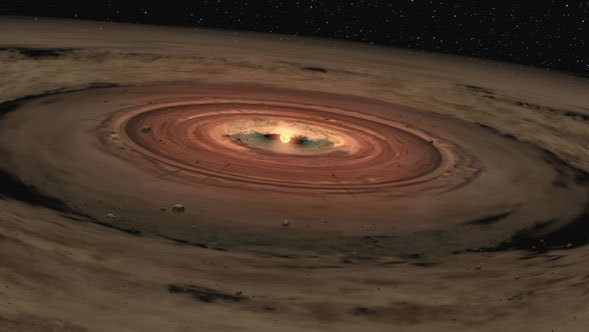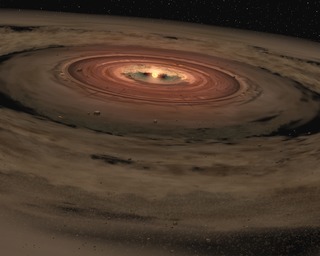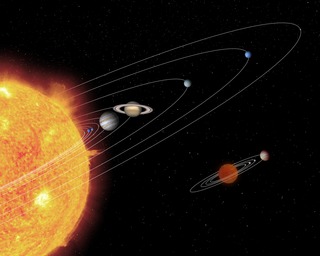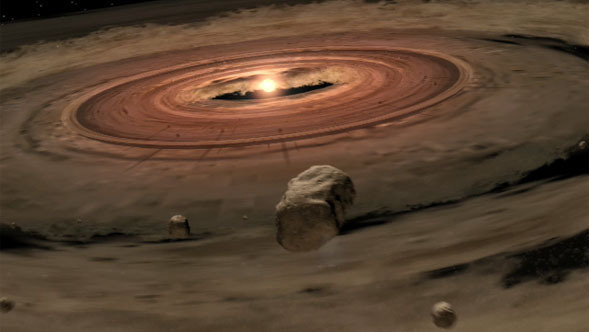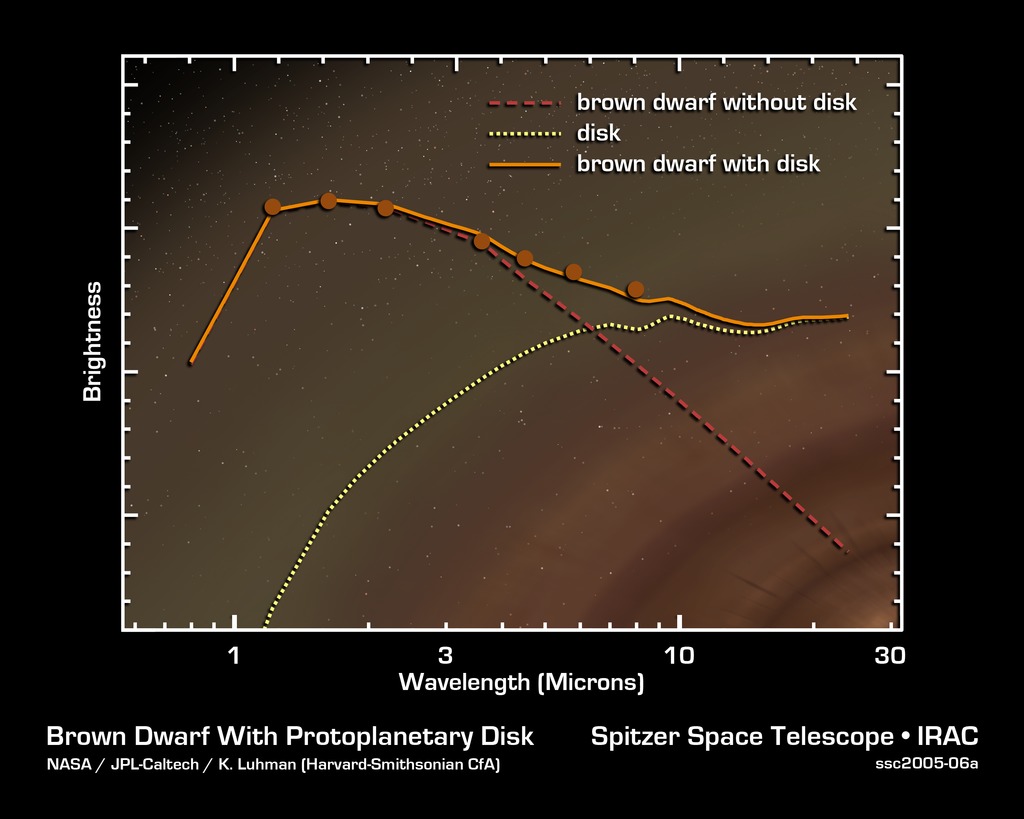
Credit: NASA/JPL-Caltech/K. Luhman (Harvard-Smithsonian CfA)
Chart • July 2nd, 2004 • ssc2005-06a
ssc2005-06a
This graph of data from NASA's Spitzer Space Telescope shows that an extraordinarily low-mass brown dwarf, or "failed star," is circled by a disk of planet-building dust. The brown dwarf, called OTS 44, is only 15 times the mass of Jupiter, making it the smallest known brown dwarf to host a planet-forming disk.
Spitzer was able to see this unusual disk by measuring its infrared brightness. Whereas a brown dwarf without a disk (red dashed line) radiates infrared light at shorter wavelengths, a brown dwarf with a disk (orange line) gives off excess infrared light at longer wavelengths. This surplus light comes from the disk itself and is represented here as a yellow dotted line. Actual data points from observations of OTS 44 are indicated with orange dots. These data were acquired using Spitzer's infrared array camera.
About the Object
- Name
- OTS 44
- Type
- Star > Type > Brown Dwarf
- Star > Circumstellar Material > Disk > Debris
- Distance
- 554 Light Years
Color Mapping
| Band | Wavelength | Telescope |
| Infrared | Spitzer IRAC | |
| Infrared | 2MASS |
Astrometrics
- Position (J2000)
- RA =11h 10m 11.5s
- Dec = -76° 32' 13.0"
- Field of View
- 0.0 x 0.0 arcminutes
- Orientation
- North is up
